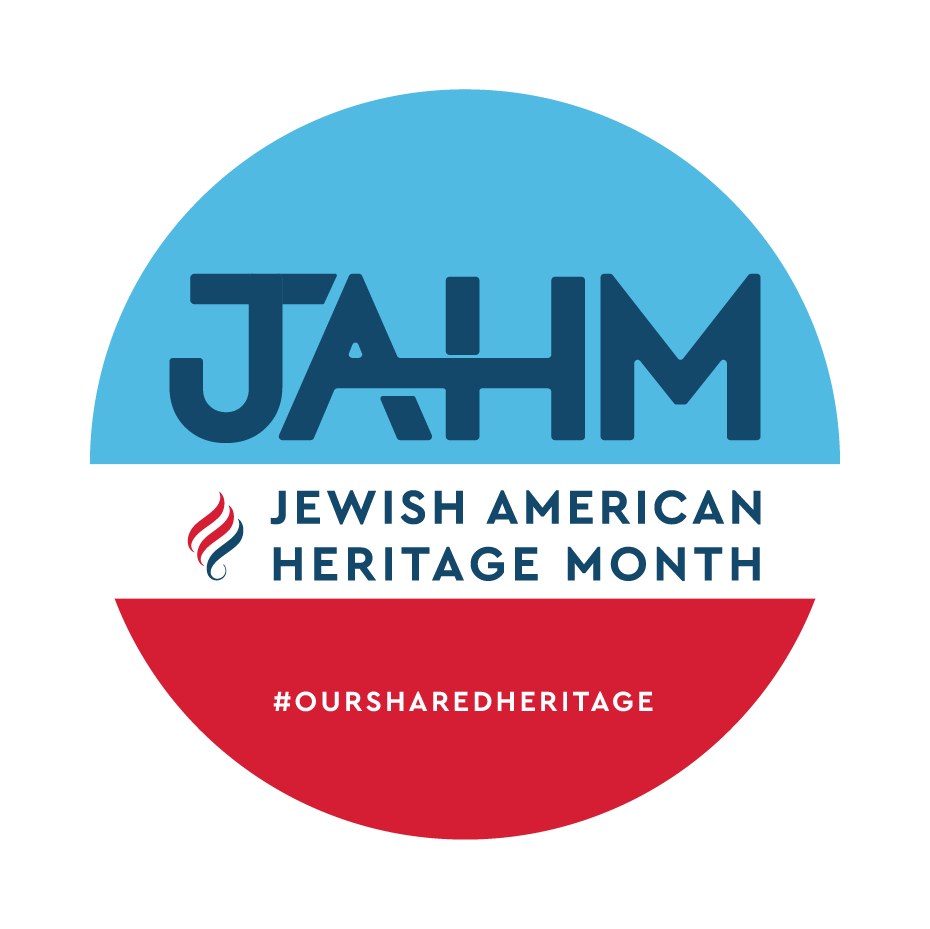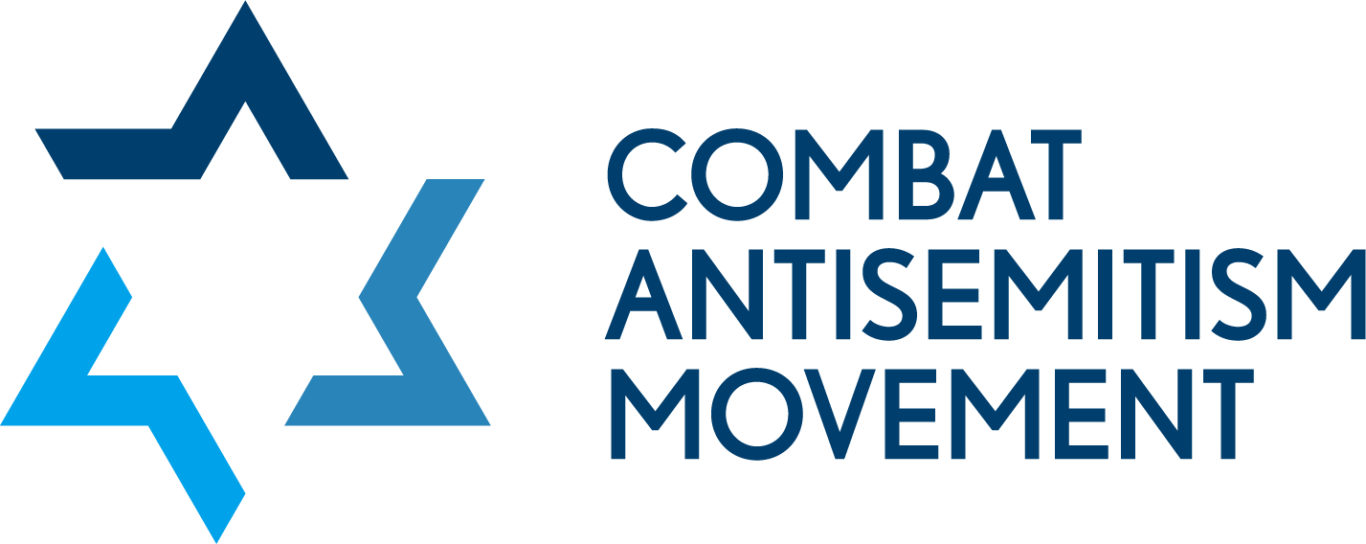Posted By admin on June 4, 2022
Among the most successful political movements in Israel in recent decades has been one relating to the Temple Mount, turning what was once an exceedingly fringe view held solely by members of the national-religious camp into something that even a significant number of secular Jewish Israelis can agree with: that Jews should be allowed to not only visit but pray on the Temple Mount.
That shift truly a dramatic one, historically speaking was on display on Sunday as a record number of Jews visited the site to celebrate Jerusalem Day, which marks Israels capture of East Jerusalem in the 1967 Six Day War, the first time that the Temple Mount was in Jewish hands, at least nominally, in some 2,000 years.
Over 2,600 Jews visited the Temple Mount, setting a record for the highest number of Jewish visitors to the site in a single day, likely since the Second Temple was destroyed in 70 CE. This represents an astronomical rise in just a few years. There were only 5,000 visits to the Temple Mount by Jews in all of 2012 (some of those being repeat visits by the same people, meaning the number of total visitors was likely significantly lower than that). In the enter year 2000, 1,000 Jews visited the Temple Mount fewer than half as many as did on Sunday.
For decades, religious authorities issued strict prohibitions against visiting the Temple Mount, widely considered to be the holiest site for Jews, on the grounds that people could accidentally defile the site. And until relatively recently, these bans were accepted by the overwhelming majority of Israels Jewish public.
In recent years, however, a relatively small but intensely dedicated faction from Israels so-called national-religious camp Orthodox Jews generally associated with right-wing, hawkish politics and crocheted yarmulkes has chipped away at that consensus view of halacha, or Jewish law, issuing rulings that allow or even require visits to the Temple Mount to some parts of it, anyway, and under certain conditions.
With those dueling rulings in place, more and more religious Jews have felt comfortable ascending the Temple Mount often immersing themselves in a purifying mikveh beforehand which has enabled the activists to slowly alter what is considered acceptable behavior for Jews on the esplanade.
Jewish religious nationalists wave an Israeli flag on the Temple Mount, May 29, 2022. (Screen grab)
In addition to this one-two punch of reinterpreting halacha and establishing facts on the ground, Jewish Temple Mount activists have also fought a stunningly successful public relations battle, shifting the discourse around Jewish visits to the site from an outlying religious issue to a cause that even secular and liberal Israelis can agree with: freedom of worship and national sovereignty.
Even as Foreign Minister Yair Lapid sought to calm tensions around the Temple Mount last month by pledging Israels commitment to the status quo saying, Muslims pray on the Temple Mount, non-Muslims only visit. There is no change, there will be no change he voiced some unease about that framework, which he deemed discriminatory.
By the way, I dont feel comfortable with the idea that Jews do not have freedom of religion in the State of Israel and that Jews are banned from [praying at] the site
By the way, he told international reporters, I dont feel comfortable with the idea that Jews do not have freedom of religion in the State of Israel and that Jews are banned from [praying at] the site.
The result of these efforts by national-religious activists in recent years has been a meteoric rise in visits by Jews to the Temple Mount; a profound change in the status quo on the site, and some violations of it; and far greater support for both of these developments among mainstream Israelis.
Indeed, a recent survey of Jewish Israelis by the Israel Democracy Institute found that exactly half support allowing Jews to pray on the Temple Mount, with three-quarters of these saying that they support it because it would send a message about Israels control over the site, while only a quarter said that it should be allowed because of religious reasons. Forty percent of those polled opposed Jewish prayer on the Temple Mount, with 57.5 percent of them saying that they were against it because it might invoke a severe negative reaction from the Muslim world, while the rest said they opposed it because they believed it was forbidden under Jewish law.
Almost immediately upon wresting control of the Temple Mount away from Jordan, which had occupied it following the 1948 War of Independence, Israeli government officials and rabbinic leaders both recognized the significance and possible dangers associated with the flashpoint site, each for their own reasons.
Moshe Dayan at the Temple Mount, June 7, 1967 (Ilan Bruner / GPO)
For the Israeli government, the issue was principally diplomatic and security-related in nature. Then-defense minister Moshe Dayan believed that exerting full sovereignty in practice over the Temple Mount would prompt a fierce backlash from the Muslim world more even than the considerable violent opposition Israel had already faced in its 19 years of existence that would make it more difficult for Israel to maintain its control over the rest of Jerusalem and the West Bank, which Dayan saw as strategically far more significant. He therefore called for management of the site to be re-entrusted to Muslim authorities, even encouraging Muslim prayer to restart within weeks of its capture, while Israeli forces would be responsible for external security.
Leaving administration of the [Temple Mount/Haram al-Sharif] in Muslim hands softened international resistance to the steps Israel took, aided in normalizing Israeli control over the [Temple Mount/Haram al-Sharif] and facilitated Israeli jurisdiction over East Jerusalem, Yitzhak Reiter, a professor of Middle East Studies at Ashkelon Academic College and long-time researcher into the Temple Mount, wrote in a 2017 paper on the topic.
A group of soldiers surrounds then-IDF chief rabbi Shlomo Goren as he blows a shofar at the Western Wall in Jerusalems Old City on June 7, 1967. (Bamahane Magazine/Defense Ministrys IDF Archive)
These concerns were soon proven legitimate as Palestinians rioted after the then-chief rabbi of the Israel Defense Forces, Shlomo Goren, held prayer services on the Temple Mount two months after its capture on the Jewish fast day of Tisha BAv, which commemorates the destructions of the temples.
This violence led the Israeli government to appoint a ministerial committee to consider the matter and formalize its policies regarding the Temple Mount. The committee ordered Goren to halt his services on the esplanade and to stop taking measurements of the site (for the purposes of preparing the construction of a third temple). The committee also dictated: When Jewish visitors enter through the gates of the Temple Mount for the sake of prayer, they shall be redirected by defense forces to the Western Wall.
This decision, issued a few months after the war, largely established what is now known as the status quo on the Temple Mount: Israel controlled the security arrangements and oversaw bureaucratic issues, while the Muslim Waqf controlled day-to-day operations on the site. Muslims prayed on the site; non-Muslims could visit but not pray.
When Jewish visitors enter through the gates of the Temple Mount for the sake of prayer, they shall be redirected by defense forces to the Western Wall
The Chief Rabbinate and leading rabbinic figures acted far, far faster, issuing an edict against Jewish visits to the Temple Mount and maintaining that those who did risked desecrating the holy site. This was just two days after it was captured, long before the government decision and even before the war had ended.
A paratrooper runs up the steps to the Temple Mount in Jerusalems Old City on June 8, 1967. (Bamahane Magazine/Defense Ministrys IDF Archive)
That ruling was based on concerns about the precise location of certain parts of the original temples, some of which a person could only enter after they had been ritually purified and one in particular the Holy of Holies that no one but the high priest could enter, and even then only on Yom Kippur.
It is not currently possible to perform the purification rites needed to visit these sites, as the primary ingredient a red heifer with no blemishes that has never been pregnant, milked or yoked has never been found in modern times. (There have been constant efforts to locate one over the years and, now, to breed one using genetic modification, but so far to no avail.)
It is also difficult to ascertain with absolute certainty the location of these parts of the Temple Mount. The locations were last recorded with any degree of accuracy in the Mishnah (codified circa the year 200), but the esplanade itself has been expanded since then, rendering those measurements at best incomplete.
As a result of this uncertainty and because all Jews today are effectively considered to be incurably impure, they are therefore forbidden by this ruling from visiting the esplanade lest they accidentally walk through and desecrate those areas.
The ruling remains in effect today and it is why many religious Jews who might politically support the concept of Israel exerting full sovereignty over the Temple Mount do not personally visit the site. Such is the case of far-right Knesset member Bezalel Smotrich, for instance.
The rabbinates decree was overwhelming accepted by Israels Jewish population from 1967 through the 1990s, with the exception of what was at that time a fringe minority in the national-religious community. That fringe minority included a group of religious extremists the so-called Jewish Underground who in the early 1980s plotted to blow up the Dome of the Rock. The attack was foiled at the last minute by Israeli security forces.
Palestinian Muslim worshipers walk past the Dome of the Rock mosque, situated in the al-Aqsa compound on the Temple Mount in Jerusalems Old City, March 1, 2019, before Friday noon prayers. (Ahmad Gharabli/AFP)
Toward the end of this period, the status quo began breaking down. Israel opened the Western Wall tunnels, an underground passage that runs along the base of the esplanade, which the Waqf interpreted as a violation of the arrangement. The Waqf in turn halted all cooperation with the Israeli government, building and renovating structures on the site without the required authorization, particularly from the Antiquities Authority. Looking to calm tensions, Israel deliberately turned a blind eye to these oversteps.
Frustrated by these events and fearing that Israel could relinquish control over the Temple Mount as part of the peace deals with the Palestinians that were being negotiated ultimately to no avail during this time, Jewish national-religious groups sought to reinforce the Jewish Israeli publics connection to the location. The most significant of these activist groups was the Temple Institute, an organization that not only advocates for Jewish pilgrimages to the Temple Mount but also actively prepares for the construction of a new temple on the esplanade, crafting the equipment and clothing that would be needed to perform temple service according to strict biblical standards.
Throughout the 1990s, activists worked to overturn, or at least challenge, the rabbinates ruling against visiting the site. They did not reject the opinion that the Temple Mount was holy and that certain parts had to be avoided, but believed there were ways to visit the esplanade without desecrating the site. This included immersing in a ritual bath prior to ascending and staying on pathways that are believed to not pass through those sacred areas, generally by staying as close to the edge of the mount as possible.
Though efforts to reverse the prohibition on ascending the esplanade have so far failed indeed a sign reminding visitors of the proscription is still displayed outside the Mughrabi Gate, through which non-Muslims enter the site over the past three decades these groups have moved the needle on public perception of the Temple Mount.
Israel Police hold back right-wing Jewish activists of the Temple Mount Faithful movement outside the Temple Mount in Jerusalems Old City, on April 10, 2016. (Corina Kern/Flash90)
The first crack in the consensus on the ban came in 1996, when the rabbinical council of the West Bank published a ruling that deemed it permissible to go up to the Temple Mount and encouraged rabbis who agreed with this view to do so with their congregants.
In 2000, one of the co-founders of the Temple Institute, Rabbi Yisrael Ariel, released his own ruling that went further, arguing that visiting the Temple Mount was necessary to fulfill the biblical commandment of conquering the land of Israel, which meant that ascending the mount was not only permissible but required under Jewish law.
Some rabbis have also argued that certain animal sacrifices specifically the sacrifice of a lamb for the Passover holiday are still required today, regardless of the nonexistence of a temple, and each year small groups of religious Jews attempt to perform such rituals, though they are always stopped by police.
A sheep is carried for the Passover Sacrifice practice ceremony at Beit Orot in East Jerusalem, on April 18, 2016. (Hadas Parush/Flash90)
Though this interpretation remains highly uncommon among ultra-Orthodox, or Haredi, Jews, it has become increasingly adopted by national-religious rabbis, including some prominent ones, like Rabbi Dov Lior and Rabbi Chaim Drukman.
That is not to say that this is the consensus view among national-religious rabbis. In 2020, 135 national-religious rabbis published a decree upholding the ban on visiting the Temple Mount due to purity issues.
According to the Israel Democracy Institute survey, even among national-religious Jews who support Jewish prayer on the Temple Mount, this interpretation of Jewish law is relatively uncommon. The poll found that while 72 percent of people who identify as national-religious support Jewish prayer on the mount, less than a third said they held this belief because it is a religious commandment. Instead, more than 70% said it was because it was proof of Israels sovereignty.
Jewish religious nationalists wave the Israeli flag on the Temple Mount, May 29, 2022 (Screen grab)
The issue of visiting the Temple Mount has also been raised among non-Orthodox Jews. In 2007, David Golinkin, a prominent Conservative rabbi, ruled that it was not only permitted to visit the Temple Mount the areas that do not require full ritual purity, at least but that it is worthwhile in order to maintain Judaisms claim to the site.
It is permissible to enter part of the Temple Mount and I believe we should make a concerted effort to do so in order to emphasize that the Temple Mount is our Holiest site and cannot be plundered, Golinkin wrote in response to a question on the topic.
A number of organizations have been formed by national-religious activists over the years to encourage Jewish visits to the Temple Mount.
One of the largest groups is the Temple Institute, which was established in 1987. In addition to its preparations for the construction of a third temple including drawing up architectural blueprints the organization does a considerable amount of outreach, particularly to schools and educational programs. It also operates its own religious seminary, which focuses on religious issues related to the temple. For these efforts, the institute receives significant grants from the government, in addition to its private fundraising. Thousands of Israeli students religious and secular have visited the institute, whose tours include a video of the third temple replacing the Dome of the Rock on the Temple Mount and asking visitors, What are each of you doing to achieve the realization of this vision?
The institutes founder, Rabbi Ariel, is a disciple of Meir Kahane, an American-born extremist whose Kach party was banned from the Knesset for racism. Ariel is a regular speaker at memorial ceremonies for Kahane, who was assassinated in New York in 1990, and often explicitly calls for the Dome of the Rock to be demolished to make room for a Jewish temple.
A more recently established organization, the Temple Mount Heritage Foundation, similarly advocates for increased Jewish presence on the compound, through political lobbying and media campaigns, as well as leading tours of the mount for schools, pre-army preparatory programs and tour groups.
On its website, the group explains to our great sorrow and disgrace, the official policy of the State of Israel at present is to officially ban Jewish prayer, but adds that the organization is fighting to change that. Moreover, the foundation assures those considering violating this prohibition that it will end, at most, with a police reprimand.
The group adds: It is unfortunate, but the more Jews there the faster it will change.
The solid gold menorah, ready for use in the Third Temple. It was constructed by the Temple Institute and is currently showcased in Menorah square overlooking the Western Wall and Temple Mount. (The Temple Institute)
And indeed the number of Jews visiting in recent years has grown astronomically and many of the limits on prayer have in turn fallen away.
Speaking during an event held at the Knesset in 2009, Rabbi Yehudah Kreuzer, a leader in the Temple Mount movement, described this slow march toward limited Jewish prayer on the esplanade.
Slowly, little by little, with stubborn persistence, prohibitions are broken, and the Mount is conquered
The barrier was broken accidentally on a hot summer day. One of Rabbi Kreuzers followers said a blessing over water before he drank and caused a tremendous commotion on the Mount. The guardians of the Waqf started to scream that he was praying over the water. The police surrounded us quickly and started to remove us from the Mount. Is it forbidden to drink on the Mount? We were surprised. Its forbidden, the officer declared. At that moment, a group of tourists stopped to take a break to drink right near us. And this is how we took the advantage, The Marker newspaper quoted Kreuzer as telling the Knesset.
Since that time, we always go up and make sure to recite a blessing over food and drink. The prayer for rain has been said and Kaddish has been recited on the Mount. Here, slowly, little by little, with stubborn persistence, prohibitions are broken, and the Mount is conquered, Kreuzer said.
Indeed, today, silent prayer is effectively if unofficially permitted on the Temple Mount. Group prayers which would constitute a clear violation of the status quo have also been documented on the site, and have reportedly occurred with the awareness of the Waqf, but they are generally less tolerated. There have also been a number of clandestine weddings held on the Temple Mount over the past decade.
Jewish prayer on the Temple Mount, as reported by Channel 12 news, July 17, 2021. (Channel 12 screenshot)
The number of Jewish visitors to the Temple Mount began to rise once the religious permissions were put in place and after increased outreach to the national-religious community on the subject.
In the early 1990s, there were only a few dozen religious Jews who entered the Temple Mount and encouraged others to do likewise. By the end of that decade, that number had risen to 1,000 people, according to Reiter.
Since then, numerous court cases have bolstered the rights of Jews to visit the Temple Mount and diminished the ability of police to prevent them from praying there. These efforts have been strengthened by the election of a number of politicians who support Jewish rights to the Temple Mount, most notably former MK Yehudah Glick, who was and remains one of the countrys most prominent and controversial Temple Mount activists.
As a result of all these factors, over the past 20 years, the numbers have ballooned into the tens of thousands, with nearly 35,000 Jews visiting the Temple Mount in 2021, despite coronavirus restrictions being in place for part of that year. This year is on track to push those numbers still higher.
Read the original post:
Fighting rabbinic ban, Jewish activists push Temple Mt. prayer closer to mainstream - The Times of Israel
Category: Jewish American Heritage Month |
Comments Off on Fighting rabbinic ban, Jewish activists push Temple Mt. prayer closer to mainstream – The Times of Israel
Tags:








